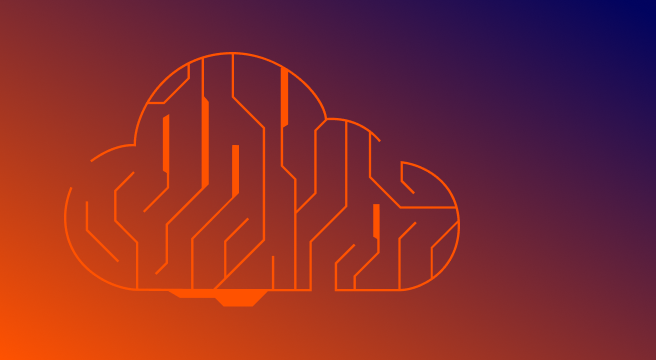Identity and access management (IAM) lifecycle
Published | July 14, 2025 |
Enrollment, maintenance and de-provisioning
The IAM lifecycle includes three key phases: enrollment (users get secure credentials); maintenance (monitoring, updating and auditing access rights); and de-provisioning (access revocation). Each phase supports secure and compliant identity and access management.
What is the identity and access management (IAM) lifecycle?
The IAM lifecycle is a structured way to manage access, starting from the time a user joins your organization to the moment you revoke their credentials.
Managing identities is about controlling the entire identity journey. If your team overlooks any phase of the lifecycle process, you could end up with misaligned or excess permissions, compliance failures or worse — unauthorized or compromised access that leads to a breach.
Enrollment
The IAM lifecycle begins with users' enrollment in the system. During this phase, each user receives a unique digital identity, which typically includes a username and associated credentials.
Depending on your organization’s security protocols, this process may include additional security measures, like multi-factor authentication (MFA), biometric verification or hardware security tokens.
Credentials and access tokens are a critical part of your IAM lifecycle. You must give users secure, tamper-proof access credentials that will serve as their identification within the system.
For cloud services, users often get secure access through API tokens or federated identities. These credentials let them automatically log in without using traditional usernames and passwords.
Every IAM system should include strong verification controls to confirm users' identities before issuing credentials.
Strong enrollment practices also help reduce identity exposure. When you tie user identities to secure credentials from the start, you make it easier to manage, audit and revoke access later, especially in cloud environments with federated identity systems like single sign-on (SSO) or OpenID Connect (OIDC).
Maintenance
Once you’ve enrolled users, the maintenance phase begins. Regularly review and adjust user access rights as roles and business needs change. This keeps you compliant with your security policies.
Proper maintenance, such as periodic access reviews and policy updates, reduces the risk of unauthorized access and supports compliance. When combined with identity threat detection and other security monitoring tools, IAM maintenance helps identify suspicious activities (like unusual login attempts) so you can address them before they escalate into potentially serious issues.
Automation tools are beneficial to the maintenance phase because they help decrease mistakes and apply consistent controls based on established policies. For instance, if an employee transitions to a new department, your IAM system can automatically adjust permissions for new roles and responsibilities.
This phase is also where exposure management is important. By mapping IAM controls to identity behaviors and environmental context, you can catch unexpected access changes (drift) before they become a security risk.
See how tools like Tenable Identity Exposure automatically finds misalignments between access rights and real-world use.
De-provisioning
De-provisioning is the final step in the IAM lifecycle. It involves removing user access when it is no longer needed.
It typically happens when employees leave your organization, transfer to different roles, or no longer require access to specific systems. Proper de-provisioning ensures users do not retain access to systems or data they no longer need.
De-provisioning involves more than just disabling user accounts. It includes revoking all associated credentials, including passwords, API tokens, session cookies and security certificates, to eliminate any residual access. This is key to preventing insider threats and orphaned credentials from falling into threat actors’ hands.
Failing to properly de-provision access is a common and dangerous oversight.
Former employees, vendors or partners may still have credentials to access systems if your IAM processes don’t shut things down completely.
Automated IAM systems can enforce access expiration dates or integrate with HR tools to automatically revoke permissions during offboarding. That level of control helps shrink your attack surface and strengthens your zero-trust posture.
IAM lifecycle FAQ
What is the IAM lifecycle?
The IAM lifecycle manages a user’s digital identity from enrollment through maintenance to de-provisioning. It ensures users get the right access at the right time, and that they lose it when they no longer need it.
Why is de-provisioning important in IAM?
De-provisioning in IAM ensures users lose access when they leave or change roles. Without it, you risk leaving behind valid credentials that attackers or former employees could use.
What happens during the IAM maintenance phase?
The IAM maintenance phase continuously reviews and updates access rights to match users’ current responsibilities. It prevents privilege creep and catches unauthorized access early.
How does IAM help with regulatory compliance?
By enforcing secure enrollment, timely updates and complete de-provisioning, IAM helps you meet security and compliance requirements.
Can IAM automation improve the lifecycle?
Yes. Automation tools reduce human error, speed up provisioning and de-provisioning, and ensure consistent policy enforcement across your environment.
See how Tenable gives you visibility into identity configurations, misused permissions and overprivileged access, so you can enforce least privilege from onboarding to offboarding.
IAM resources
IAM products
Cybersecurity news you can use
- Tenable Cloud Security
- Tenable Identity Exposure
- Tenable One


